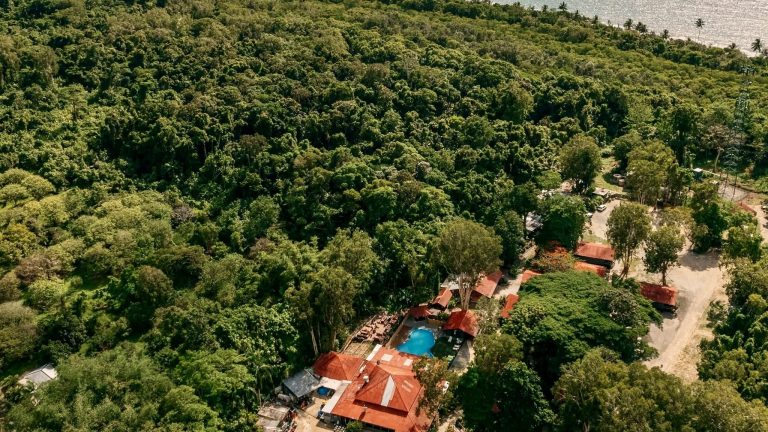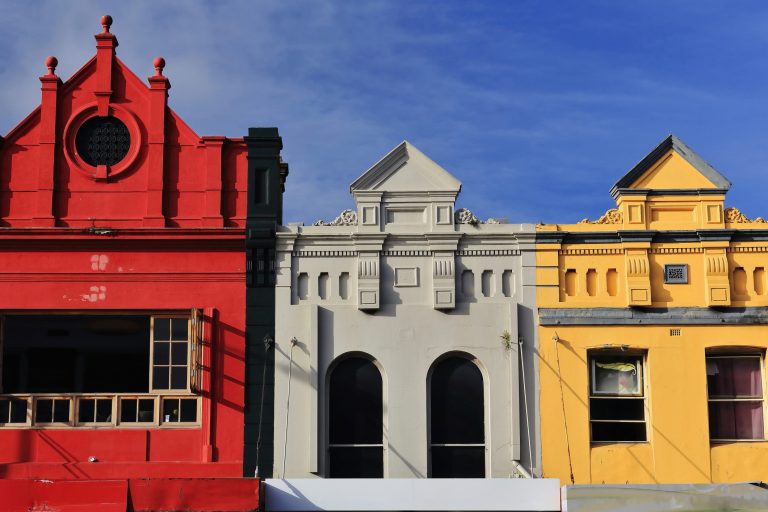‘Kimchi Street’ aka Healeys Lane in Melbourne gets official Koreatown status
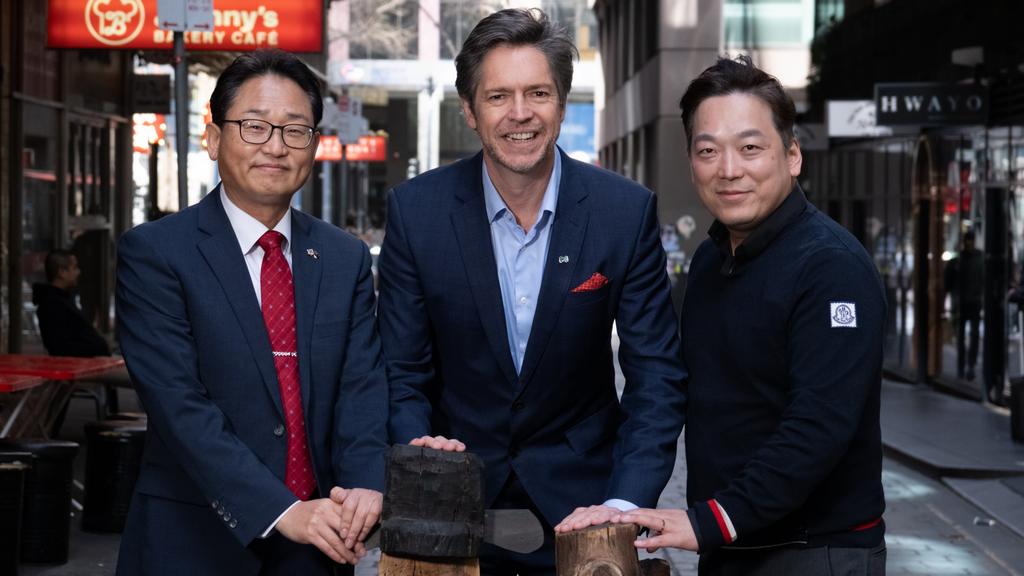
Republic of Korea’s Victorian Consulate-General Changhoon Yi, Melbourne lord mayor Nick Reece and Miracle Ventures Group CEO Hong Kim in the city’s newly designated Koreatown.
Melbourne has welcomed its first official Koreatown, a buzzing precinct that’s home to at least 25 Korean stores and restaurants along a vibrant laneway in the centre of the CBD.
Healeys Lane is home to the new Koreatown, which has been signposted by Korean totem poles, known as jang-seung, at its entrance on Lonsdale and Little Lonsdale Street.
The poles are there to entice more visitors and help distinguish Koreatown from the rest of the CBD, said Melbourne’s lord mayor Nick Reece.
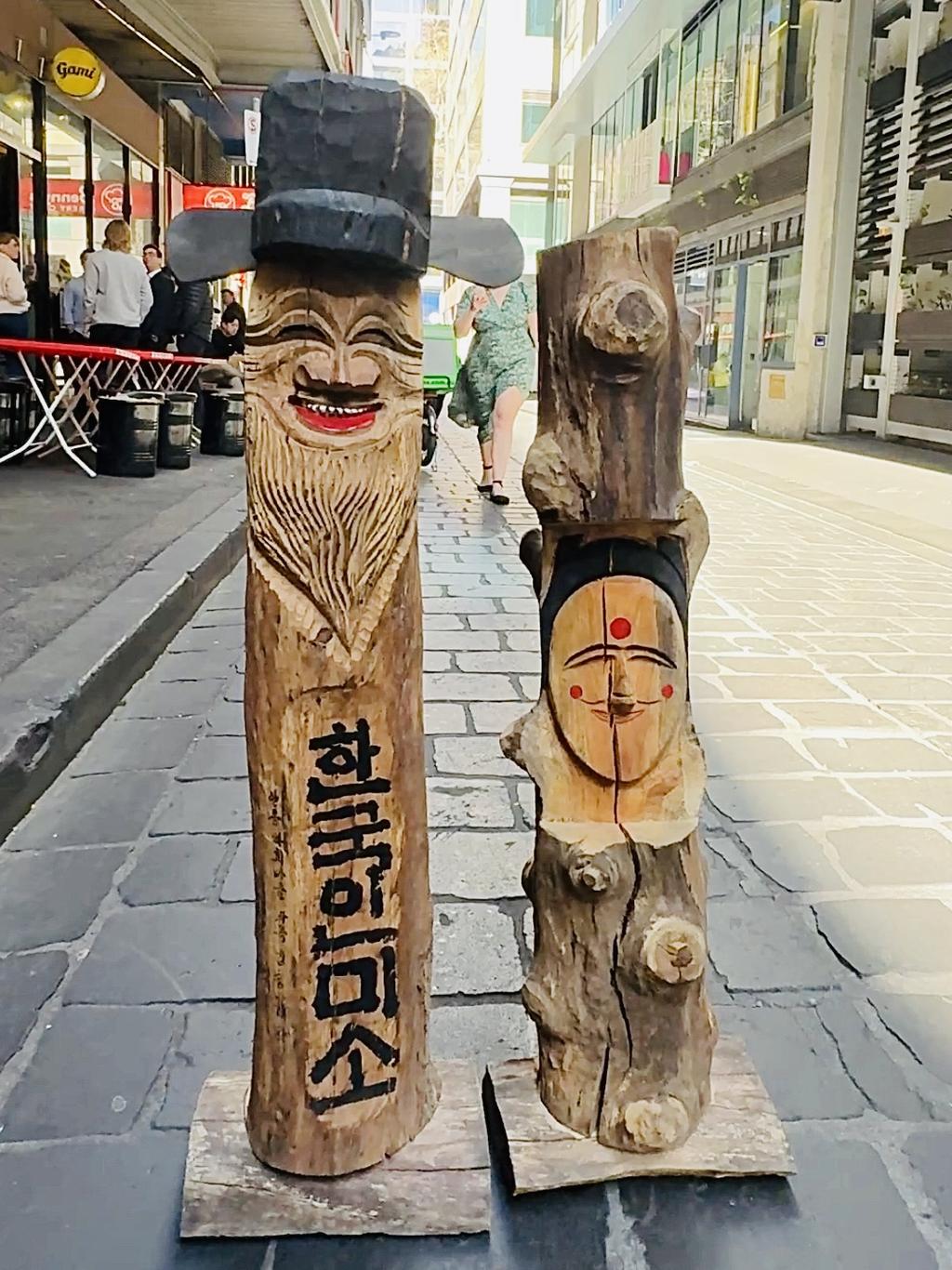
The jang-seung marking the entrance of Melbourne’s Koreatown.
“Healeys Lane and the surrounding area has become a mecca for Korean food and culture – boasting some 25 Korean businesses, including some of the most exciting and popular restaurants in town,” Mr Reece said.
“Council has ‘put a ring on it’ – making our Koreatown status official – joining colourful Koreatowns in cities like Toronto, LA, New York and Sydney.”
More than 2500 Korean-born Melburnians live across the city, the lord mayor said, and it’s hoped that giving Healeys Lane the official Koreantown recognition would attract even more
Australians and visitors with Korean heritage to visit the area.
Healeys Lane already attracts 5000 people each day – about a quarter of the number of visitors who stop by the city’s Chinatown, which is about 1.4km away on Little Bourke Street.
But in the past week alone, foot traffic in Koreatown is up 20 per cent, as the official designation draws more tourists and people from Melbourne’s outer suburbs, said Hong Kim, chairman of the Melbourne Korean Business Association.
Mr Kim, who came to Australia from Korea in 2005, is also the chief executive of Miracle Ventures Group, a hospitality group responsible for several Melbourne venues including BBQ King and The Butter Room as well as two in Healeys Lane; Nana Izakaya and Seven Star Pocha.
Seven Star Pocha, which opened eight years ago, was the third Korean restaurant to open on Healeys Lane, known colloquially as Kimchi Street for about four years.
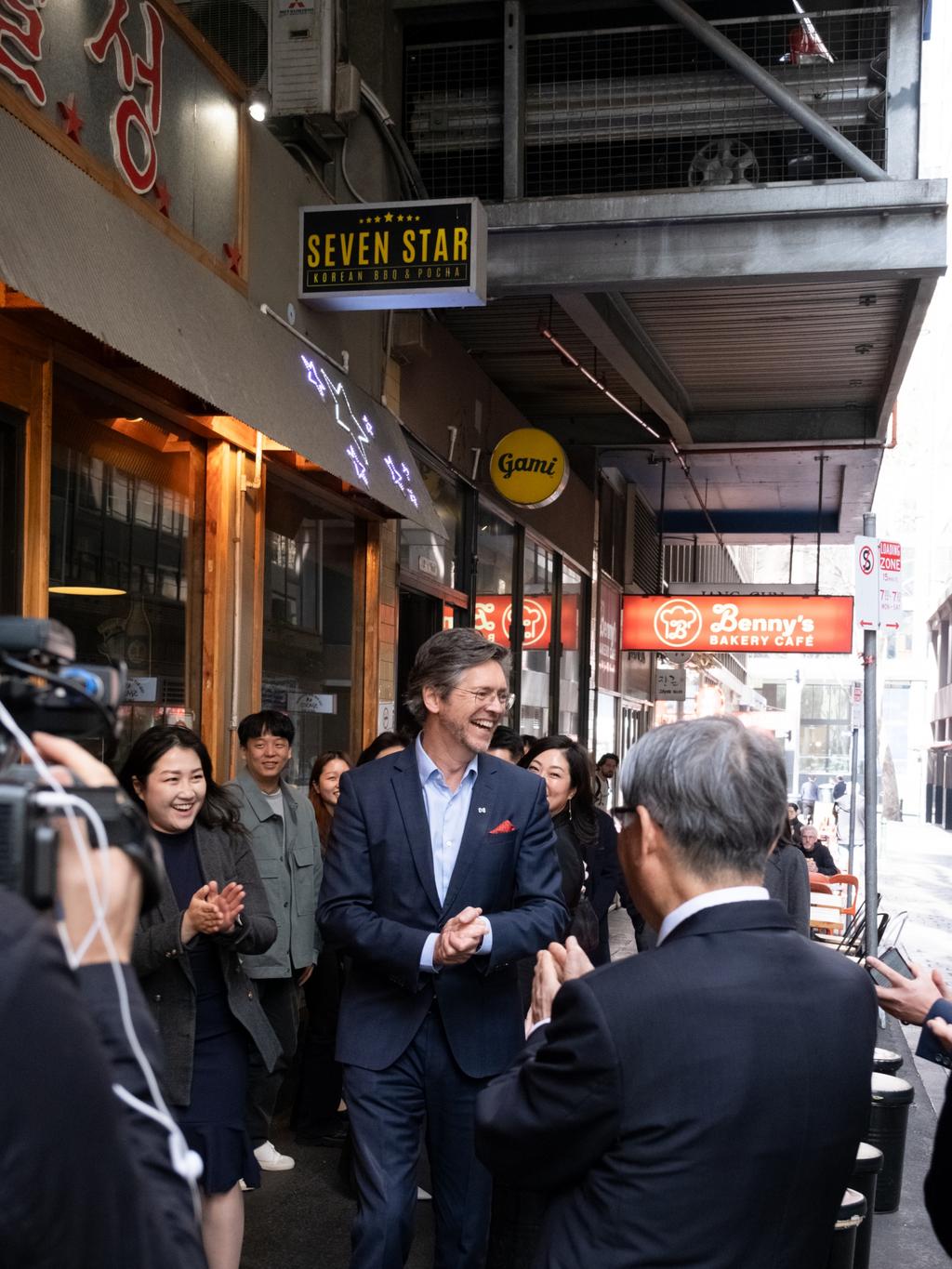
Melbourne lord mayor Nick Reece outside Seven Star Pocha and Gami Chicken in Koreatown
Mr Kim formed MKBA with fellow business owners three years ago, and approached the council with the idea to call Healeys Lane, Koreatown.
“There are not just restaurants, but there are accountants, stores and export and import businesses,” he said.
“If we named the area Koreatown, we knew we could attract more people and hold more events officially.”
Koreatown’s location near the federal court drew a number of lawyers and other office workers during the day, but it was at night when visitors got a chance to experience the richer Korean culture, Mr Kim said.
“In Korea, it is very common to open too late or sometimes run 24 hours, so we open until 2.30am on weekdays and 3.30am on weekends; if you’re in Healeys Lane, you open late,” he said.
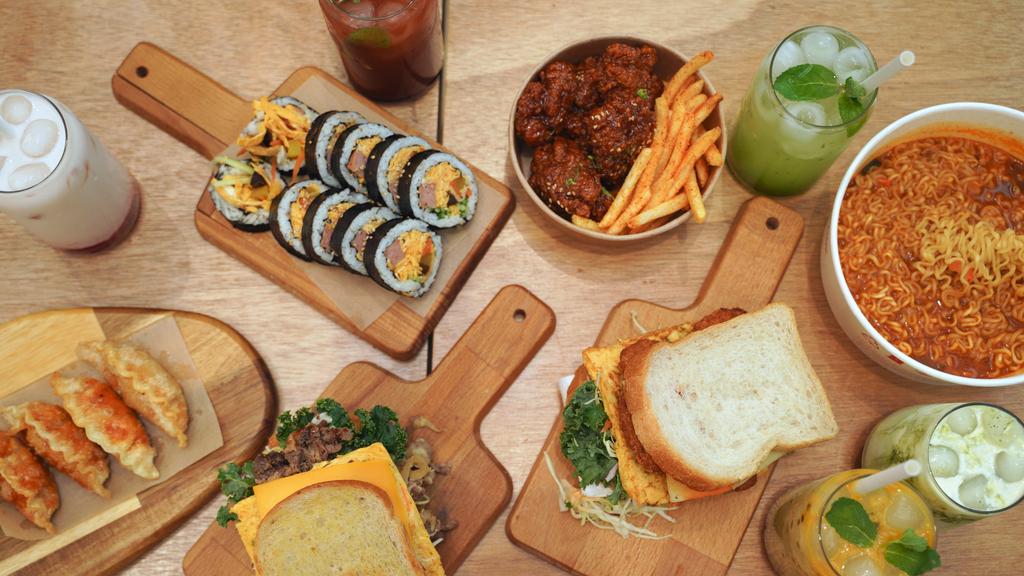
Dishes from Seoul Toast, a Korean street food bar in Healeys Lane.
“But our licence is until 5am and on days like new years, you wouldn’t believe how many people come to Healeys Lane; a lot of people come to enjoy the night, and we want our customers to experience real Korean culture.”
Funding for the new totem poles at Koreatown’s entrance, and for their maintenance, was provided by the Republic of Korea’s Melbourne Consulate-General Changhoon Yi.
Mr Yi expressed his “deepest gratitude” to the council for the formal establishment of Melbourne’s Koreatown.
“Amid the growing interest in Korean food and culture driven by the Korean Wave, the designation of ‘Korean Street’ is a significant step in strengthening the cultural ties between Korea and Melbourne,” he said.
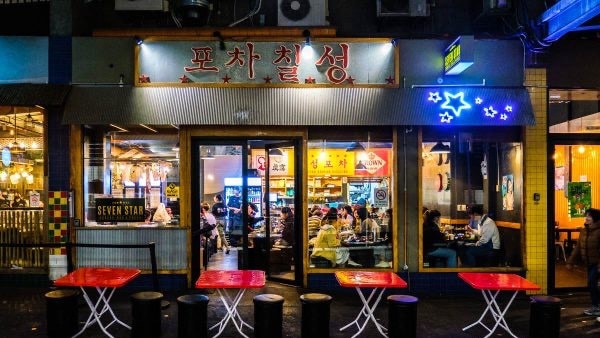
Seven Star Pocha in the Melbourne CBD.
“This formalisation will provide more opportunities to experience Korean cuisine and culture, positively impacting the local economy and tourism industry.”
Australia-Korea Business Council chief executive Liz Griffin told The Australian the council “applauded” the decision to make Koreatown official.
“This designation celebrates the vibrant Korean community that thrives in Melbourne and underscores the increasing significance of Korean culture and business in the city,” she said.
A number of major Korean companies, including Hanwha Defence Australia, GS E&C and Samsung C&T, had established a presence in Melbourne in recent years and the city was increasingly beginning to appreciate Korean culture, Ms Griffin said.
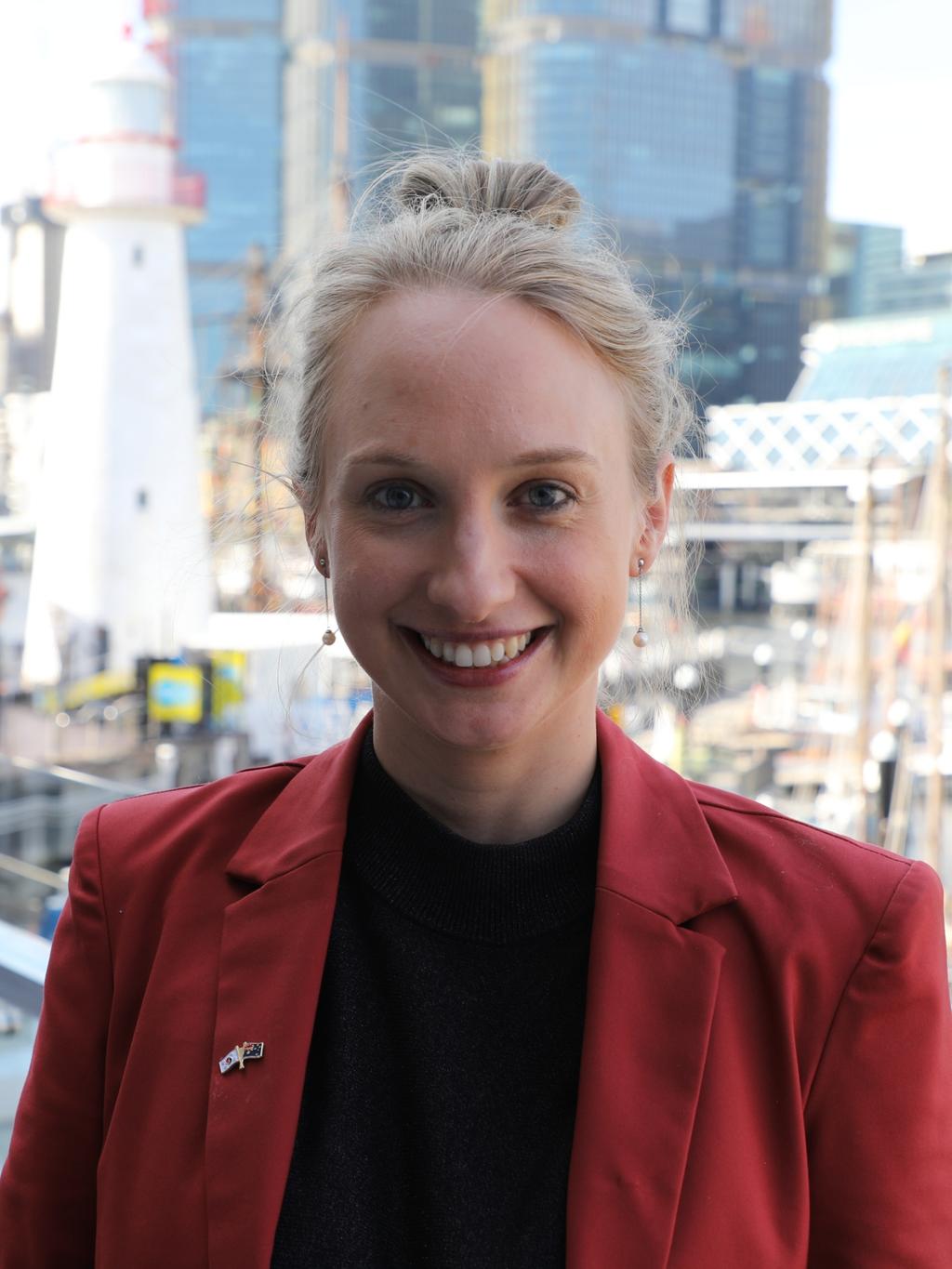
Australia-Korea Business Council CEO Liz Griffin.
“Trade and investment opportunities between Victoria and South Korea are significant, and Victoria’s trade with South Korea has nearly doubled since 2019, highlighting the growing economic ties and promising export opportunities for Victorian businesses,” she said.
Korea’s booming entertainment industry was also helping to break down barriers as more Australians watched Korean TV shows and films and listened to the country’s pop music.
“There is a growing public appreciation and understanding of Korean culture, popularised by the global appeal of K-pop and the international acclaim of K-dramas and films like Squid Game and Parasite,” Ms Griffin said.
“These cultural phenomena not only entertain but also spark dialogue about Korean society and its values, deepening the connection and understanding between our countries.”
Melbourne is following in the footsteps of Sydney, which has had its own Koreatown for a little over a decade, along a short strip in Pitt Street.
Sydney Koreatown was hit hard during the pandemic when a mass exodus of tourists and international students dramatically reduced the number of visitors, and the money being spent in stores.
But the area is expected to make a major turnaround as new developments are under way, including which is due for completion next year.

